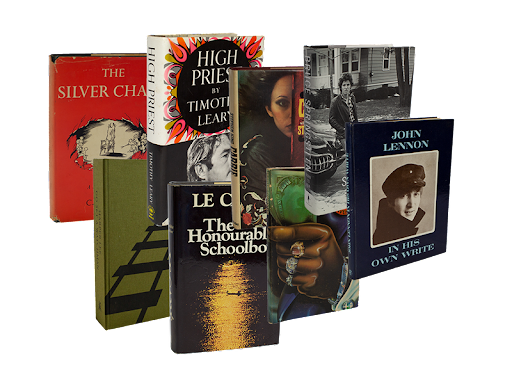Are you ready to learn more about first edition books? We are here to explain how you can identify them and to start building a valuable collection.
So you’ve wandered into Bynx, either virtually or at our shop, and you see the words “first edition” on placards describing our books. This cues your curiosity, and you begin to ponder over the significance of the descriptor. Why the first edition, and why would anyone be interested in one anyway? How do you even know how to identify First Edition books?
Rest assured, we have the answers to your questions and are prepared to help you better understand the value behind these rare finds.
What Makes First Edition Books Valuable?
In our anniversary catalog, we penned a short article titled, “Why Collect?” to shed some light on a collector’s mindset. When it comes to first editions, collectors are generally trying to get as close as they can to the author’s initial intended presentation of their work.
The dust cover, binding, posterity, and even printing mistakes all contribute to the value of any given book. The author is usually heavily involved in the first printing and that alone makes these versions the “closest to the truth.”
With the exception of limited edition or otherwise special releases, first editions are the most sought after items by book collectors. “First” is commonly associated with “greatest value,” and subsequent print runs tend hold less value.
In some instances, it may be that the author is unknown. In this case, the printing company likely won’t want to take a chance of being stuck with a lot of unsold issues.
For example, let’s take a look at J.K. Rowling. She is one of the most successful authors of our time, and yet when she published Harry Potter and the Philosopher’s Stone, she was unknown. In fact, the first edition, first print run for the book was a mere 500 copies! Her subsequent worldwide success has resulted in the first edition copy of her first book now valued at over $100,000!
How To Identify First Edition Books

When it comes to identifying First Edition books, the devil is in the details. Various resources are available to assist one in their research. In 2022, it is considerably easier to identify these books (thanks, internet!)
The easiest way to tell is usually a combination of the cover, the copyright page, and any printing errors that were caught after the first print run. These are usually well documented, especially with regards to mainstream works.
It’s also important to note the publication country in a first edition book. This often has a different publication date and cover in each respective country where it’s sold.
Need Help Identifying First Editions? Contact Us!
Sometimes, despite your best efforts, identifying First Editions can be tricky. You can enlist the help of sellers, librarians, or other experts who can help you positively identify your books.
If you’re local to Orlando, or even somewhere remote, you can reach out to us at Bynx if you think you’ve got first edition books and need a little help to confirm your suspicions. Or, you can browse through our selection of modern first editions to get started on your collection today!



Comments are closed.